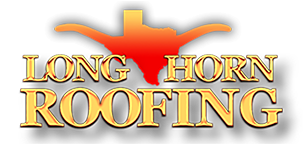Since roof replacement is an expense all landlords want to delay for as long as possible. The longevity of a roof and how much you spend on it depends on one thing; the quality of your roof maintenance. Like any building, the roof on a rental property is subject to ongoing assault from the elements. The amount of care you put into roof care determines the long-term effect of those forces. As property management company McCaw Management in Grapevine says, every property investor knows that the roof of their rental property will eventually need to be replaced. However, they do not want to replace that roof prematurely or have to spend a lot of money on maintaining it.
How should you care for the roof or your rental property? There are two ways to approach roof maintenance. You can do corrective roof repairs, which are designed to solve problems after they happen. Or preempt those problems through preventive roof maintenance?
Preventive roof maintenance is the recommended approach, as this method cuts the cost and energy spent on maintaining a roof. A preventive roof maintenance program will let you detect problems and solve issues before they get to their advanced stage.
What are 5 effective preventive roof maintenance tips for your rental property?
1. Inspect the roof regularly
Every time there is heavy rain or snow, check the roof to ensure the event has not caused any damage. When inspecting the roof, do not walk on it. You may lean a ladder against the edge of the structure and inspect it with a pair of binoculars. Also, inspect your roof from across the street to make sure it maintains a straight ridgeline.
2. Trim nearby tree branches
At least once a year, check to be sure there are no overhanging tree branches that pose a threat to the roof. Tree branches can break off during a storm and damage the roof. They can also brush against the roof and dislodge the shingles. Tree branches also serve as runways for rodents to get on the roof.
3. Clean gutters and downspouts
Dirty gutters and downspouts will redirect rainwater onto the walls of the house and into the roof’s internal structures. Clogged gutters encourage the formation of ice dams which can encourage water infiltration into the roof. Clean roof gutters and downspouts at the start of each season and inspect them for leaks, rust and lose connections.
4. Re-caulk roof flashing
Flashing can be found at those places where the roof meets the walls of the house. Flashing provides a watertight seal that helps protect the roof from water damage. Water may penetrate the roof if the flashing becomes loose or the caulking becomes brittle and cracked. If you see this, get an expert to re-caulk the roof flashing.
5. Remove growths
Moss, algae and mold pose a threat to your roof. The network of moss roots will trap moisture on the roof surface and encourage the decay of roof shingles. Algae and moss can impair the structural integrity of shingles and also discolor them. You can stop moss, algae and mold from growing on your roof by giving the structure a power wash.
The three foundations of preventive roof repair maintenance work are:
A. Scheduled inspections
Roof inspections must be done on a fixed schedule. That makes it easier to detect problems at their beginning stages when they cost less money to fix. With scheduled inspections, you can keep wear and tear at bay and reduce costs.
B. Professional
Inspections must be done by a qualified roof technician. The reason is that most landlords don’t know how to detect telltale signs of budding roof issues. Professionals know where problems are most likely to happen on the roof and how to fix those issues.
C. A Detailed checklist
A comprehensive checklist outlines the essential features of the roof to be inspected. Using a checklist helps the technician do a thorough job. The quality of the roof inspection is often a factor in how detailed the roof inspection checklist is.
Most times, roof inspections are done once a year. But in the time between these inspections, a lot can still happen that will damage the roof. That is why it is essential for you, as a landlord, to also know how to look out for the early signs of problems on your rental’s roof.
Finally, you want to recruit your tenants as allies since they are always in contact with the rental. If you give tenants the proper orientation on how to spot the subtle signs of roof problems, they will save you a lot of money. But this requires you to not only create easily-accessible means for reporting problems but also respond to those issues promptly.


